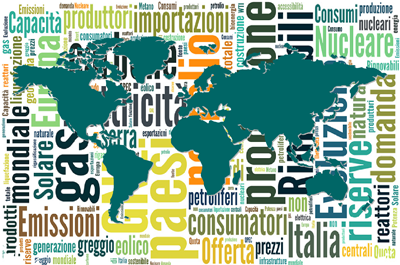The emergence of Artificial intelligence (AI), rapidly rising from a mostly academic pursuit to reach the top of the political and business agenda, has big implications for the energy sector. AI depends on energy – specifically electricity – but it also has the potential to transform many aspects of the global energy system. To help governments and other energy sector actors understand these wide-ranging impacts, at the International Energy Agency (IEA) we have leveraged our data and expertise to publish a major Special Report on Energy and AI.
Global investment in data centres has nearly doubled since 2022 to hit half a trillion dollars in 2024, raising concerns about AI’s impact on energy consumption and electricity demand. With new IEA analysis, we project that electricity consumption by data centres – driven by AI’s needs – will more than double to around 945 terawatt-hours (TWh) by 2030, more than Japan’s annual electricity usage. The United States is the world’s leading market for data centres, which are set to account for almost half of the country’s electricity demand growth to 2030. By then, the United States will use more electricity to process data than in all its energy-intensive industries combined. In Japan, data centres are set to revive electricity demand growth after years of stagnation.
This trend is not limited to advanced economies. In Malaysia, for example, data centres could drive as much as 20% of total electricity demand growth. In India, AI is one factor behind growing electricity demand, with huge data centres proposed. One such project, in Gujarat, could use as much electricity as an entire city.
Data centres require significant, uninterrupted power supplies. All sources will help meeting these needs, our analysis shows, but renewables paired with batteries, and natural gas take the lead. And as it seeks to meet demand from AI, the tech sector can also help advance new energy technologies such as small modular nuclear reactors and advanced geothermal power.
AI has much to offer the energy world itself, as the sector becomes more complex: more electrified, digitalised, connected and decentralised. AI solutions are already being deployed by energy companies as they pursue goals ranging from reducing costs to enhancing supply, reducing downtime and lowering emissions.
The oil and gas industry – long a digital pioneer – is using AI to optimise operations. In 2024, oil and gas companies operated 24 of the world’s 500 fastest supercomputers, and total computing capacity has grown at almost 70% annually since 2000. In exploration and development, AI can enhance the evaluation of resources and reduce predrilling uncertainty. In operations, it is used to optimise production processes, predict maintenance needs, and help cut methane emissions.
AI can also help manage ever more complex electricity networks. It can improve the forecasting and integration of variable renewable generation, reducing curtailment and emissions, while AI-based detection can help rapidly identify grid faults and reduce outage durations. Remote sensors and AI-based management can increase the capacity of power lines. Without building any new lines, this could unlock up to 175 gigawatts (GW) of transmission capacity – potentially more than the increase in data centre power needs to 2030. And widespread AI adoption in power plant operations and maintenance could save up to USD 110 billion annually by 2035.
There is also potential for AI to bring benefits in energy end-use sectors, especially as these become more digitalised. In industry there is great scope to integrate AI into manufacturing. AI applications can accelerate product development, cut costs and increase quality. Widespread adoption of existing AI applications to optimise processes in industry could yield energy savings larger than the energy consumption of Mexico today. European companies are well placed here, holding over half the market share for industrial automation solutions, the critical enabler for industrial AI deployment.
AI applications in transport can improve efficiency and cut costs, and are being used to manage traffic, optimise routes, predict maintenance needs and develop autonomous vehicles. The widespread adoption of AI across the transport sector could lead to energy savings equal to the energy used by 120 million cars. While autonomous vehicles operate more efficiently than conventional ones, they might also cause shifts in transport preferences, with further consequences for energy usage.
In buildings, there is significant potential for AI-led optimisation to make heating and cooling systems more efficient and electricity use in buildings more flexible. However, fragmented building ownership, limited digitalisation and inadequate incentives could present obstacles. If scaled up, existing AI-led interventions could yield global electricity savings of around 300 TWh, equivalent to annual electricity generation in Australia and New Zealand combined.
AI is also emerging as a powerful innovation tool, helping researchers accelerate discovery, testing and commercialisation. This could boost efforts to meet energy goals, in a sector where innovation often takes decades, especially as AI is well placed to solve many energy innovation challenges. For example, for solar PV, only 0.01% of next-generation materials have been experimentally produced so far. AI could help scientists find and test materials much faster, for solar PV, battery chemistries and carbon capture materials. However, progress to date is limited: only 2% of money raised by energy start-ups has gone to companies with an AI-related focus.
AI will impact global carbon emissions: balancing all factors and uncertainties, concerns that AI could supercharge climate change appear overstated. But so do expectations that AI alone will solve the emissions problem. CO2 emissions from electricity use by data centres are around 180 million tonnes (Mt) today and could reach 500 Mt in 2035, in a rapid AI adoption case. Data centres are among the fastest growing emissions sources, making up 1.5% of total energy-related emissions.
AI could also help reduce energy-related emissions. Our analysis shows that widespread adoption of today’s AI applications could yield emissions reductions far greater than any increases from data centres, but still much less than those needed to reach global climate goals. We estimate that the broad use of existing AI solutions could cut around 5% of emissions in 2035. However, barriers remain to widespread AI adoption, including data security concerns and limited access to data, digital infrastructure and skills. AI can help cut emissions, but is not a silver bullet and does not remove the need for proactive policy, innovation and investment.




















